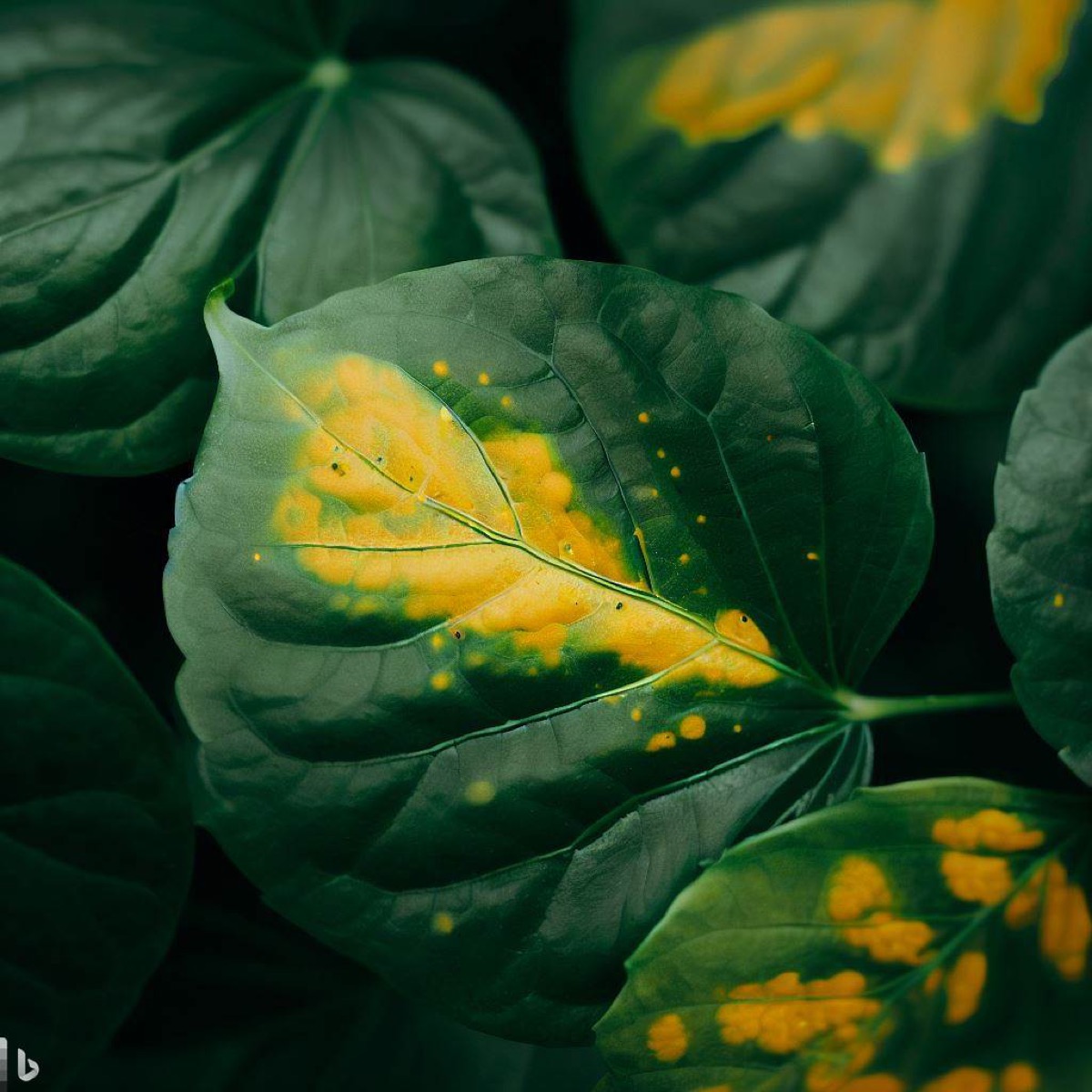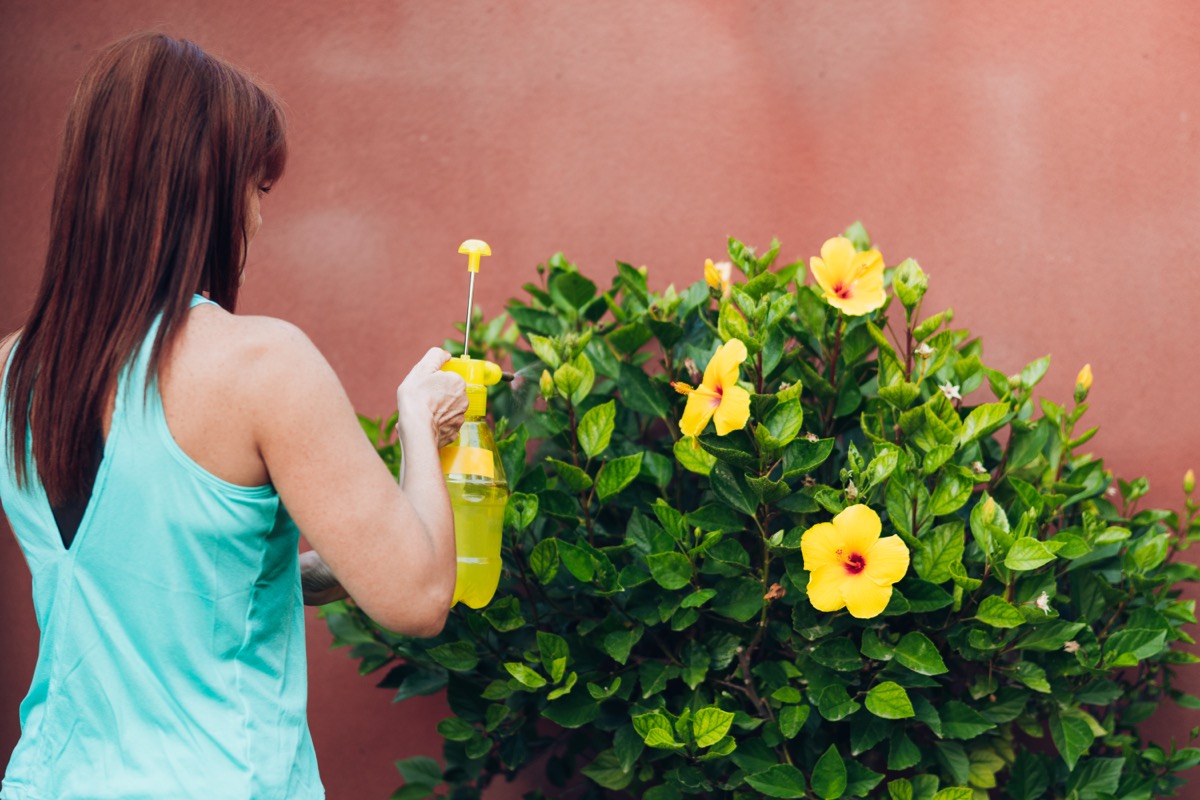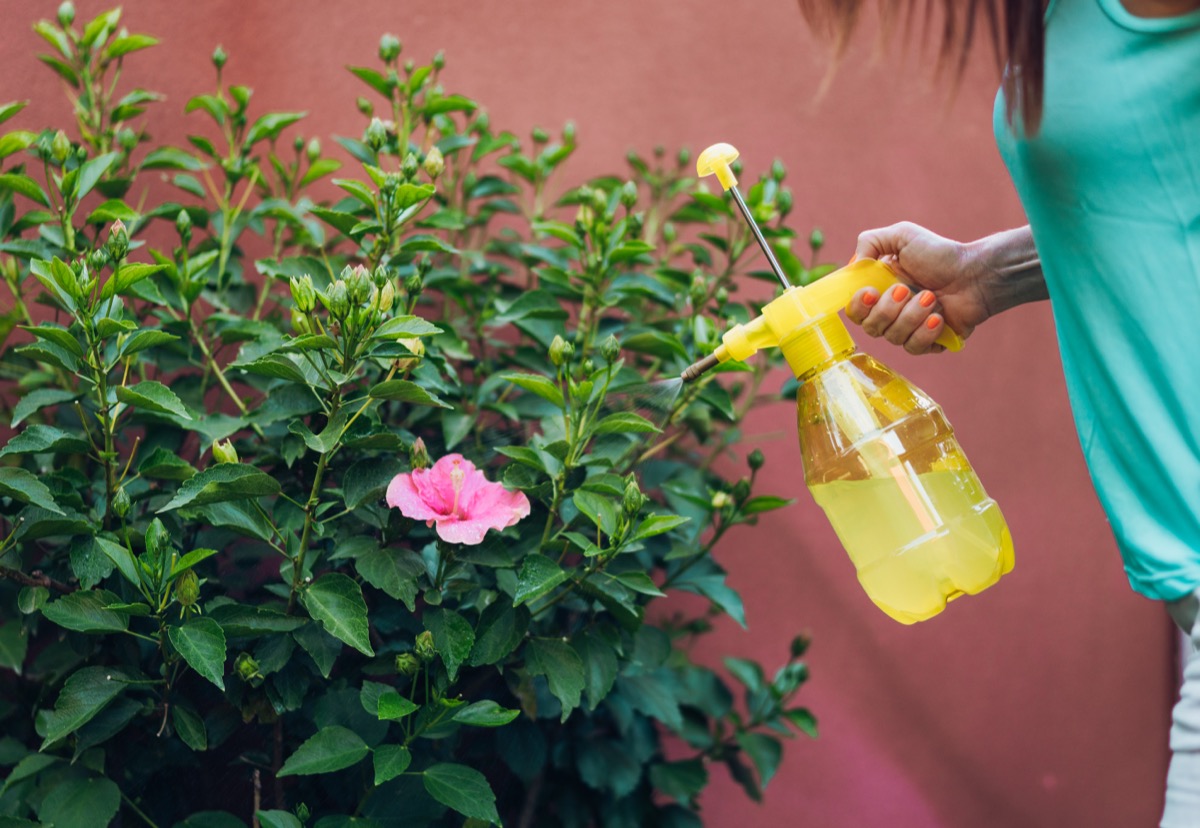Hibiscus plants are known for their vibrant and beautiful flowers, but sometimes their leaves can develop yellow spots, which can concern gardeners and plant enthusiasts. Here we will focus on the causes of why Hibiscus tree leaves turning yellow and discuss potential treatments and solutions to help restore the plant’s health and vitality.

Understanding the Causes of Yellow Spots on Hibiscus Leaves
- One common reason is a fungal infection called hibiscus leaf spot, caused by the Cercospora fungus. This fungus thrives in warm and humid conditions, leading to the appearance of yellow spots on the leaves.
- Another potential cause is nutrient deficiency, particularly a lack of nitrogen or iron. Insufficient nitrogen can result in pale yellow spots, while iron deficiency leads to yellowing between leaf veins.
- And also, Hibiscus plant leaves turning yellow can be a sign of pests like spider mites or aphids, which feed on the leaves.
Common Factors Contributing to Hibiscus Leaf Yellowing and Spots
- Nutrient deficiency: Insufficient nutrients, particularly nitrogen, iron, and magnesium, can lead to yellowing of hibiscus leaves.
- Improper watering: If your Hibiscus leaves turning yellow with brown spots, improper watering can be the reason. Excessive watering can cause the roots to become waterlogged, leading to poor oxygen intake and nutrient absorption. This can result in yellowing leaves and the appearance of spots. Conversely, underwatering hibiscus plants can also cause leaf yellowing.
- Pests and diseases: Aphids, mealybugs, spider mites, and other pests can infest hibiscus plants, sucking sap from the leaves and causing Hibiscus tree yellow leaves. Fungal or bacterial diseases, such as powdery mildew or leaf spot, can also lead to yellowing and the development of spots on the leaves.
- Environmental stress: Extreme temperatures, excessive sunlight, or sudden changes in environmental conditions can stress hibiscus plants. This stress can manifest as leaf yellowing and the appearance of spots.
- Soil pH imbalance: Hibiscus plants prefer slightly acidic to neutral soil. If the soil pH is too high or low, it affects nutrient availability and uptake, leading to leaf yellowing and spots.
In case you missed it: Bone Meal for Hibiscus Plants: Benefits, When and How to Apply

Nutritional Deficiencies as a Potential Cause of Yellowing Leaves in Hibiscus Plants
Insufficient fertilizer or the wrong type of fertilizer can result in Hibiscus turning yellow leaves. For Hibiscus, a balanced fertilizer with equal amounts of nitrogen, potassium, and phosphorus is best, such as a 20-20-20 fertilizer or a 10-10-10 fertilizer. In the summer, Hibiscus in pots should be fertilized more frequently than in-ground plants. However, fertilizers should be half the strength recommended on the label.
As a result of iron deficiency, only the leaves at the tip of each branch become yellow, and the veins remain green, with lower leaves initially remaining green. To restore the green leaves on the plants, feed them chelated iron and fertilizer at the dosage recommended on the label.
Identifying and Treating Fungal Infections in Hibiscus Leaves
- If your Hibiscus yellow leaves with black spots, fungal infections are one of the culprits. They can be identified by observing signs such as discoloration, spots, or leaf lesions.
- Treatment for yellow leaves on Hibiscus caused by fungal infections involves removing infected leaves and applying a fungicide.
- To prevent further infections, ensure proper watering and avoid overhead irrigation.
- Additionally, maintaining good air circulation around the plants can help reduce humidity, which favors fungal growth.
- It is important to note that prevention is key in managing fungal infections in hibiscus plants.
- Regularly inspecting the leaves and taking prompt action when symptoms are noticed can help keep your Hibiscus healthy.
Pest Infestations and Their Impact on Hibiscus Leaf Health
Another factor that can lead to the yellow spots on Hibiscus leaves is pest infestation. Common pests affecting hibiscus plants include aphids, whiteflies, and spider mites. These pests feed on the plant’s sap, causing damage to the leaves and potentially leading to yellow spots. To combat these pests, it is important to regularly monitor the plant for signs of pest infestation and take appropriate measures like using neem oil, insecticidal soaps, or natural predators to control their population.
Environmental Stressors and their Effect on Hibiscus Leaf Coloration: a Closer Look
Temperature Stress: High temperatures can result in leaf wilting, scorching, and a fading of color, while cold temperatures can cause leaf discoloration and browning. It is important to provide adequate temperature regulation through proper shading and insulation to mitigate these effects, especially during extreme weather conditions.
Light Exposure: Insufficient light can lead to chlorophyll degradation and is one of the causes behind indoor Hibiscus leaves turning yellow. Conversely, excessive light exposure can cause leaf burn or sun scorch, leading to brown spots or discoloration. Providing shade during peak sunlight and adjusting plant placement can help protect hibiscus plants from excessive light exposure.
Nutrient Deficiencies: Nutrient deficiencies can significantly affect hibiscus leaf coloration. Regular fertilization, using balanced formulations specific to hibiscus plants, is necessary to provide the required nutrients and maintain vibrant leaf coloration.
In case you missed it: How to Get Rid of Aphids on Hibiscus: Identification, Treatment, and Control with Natural Homemade Spray

Overwatering and Poor Drainage Causing Yellow Spots on Hibiscus Leaves
Overwatering and poor drainage can cause yellow spots to appear on hibiscus leaves. When hibiscus plants are overwatered, the excess water accumulates in the soil around the plant base, leading to saturated conditions. This causes the roots to become saturated and prevents them from absorbing oxygen properly.
As a result, the plant’s overall health is compromised, and yellow spots start to develop on the leaves. Additionally, poor drainage exacerbates this problem by preventing the excess water from draining away efficiently. To prevent yellow spots on hibiscus leaves, it is essential to water the plants adequately and ensure proper drainage by using well-draining soil and pots with drainage holes.
Understanding the Role of Sunlight Exposure in Hibiscus Yellowing
Sunlight exposure plays a significant role in the yellowing of hibiscus leaves. This phenomenon occurs due to photooxidation, where excessive sunlight exposure causes the breakdown of chlorophyll pigments in the leaves. As a result, the green color fades, and the leaves turn yellow. Sunlight is vital for photosynthesis, the process by which plants produce energy.
However, too much sunlight can lead to excessive plant energy production and oxidative stress. This stress disrupts normal physiological processes, leading to leaf yellowing. Understanding the relationship between sunlight exposure and hibiscus leaf yellowing is crucial for proper plant care and maintenance.
pH Imbalances in Soil and Their Influence on Hibiscus Leaf Health
The yellow in this condition is different, as it is called chlorosis. There is a nutritional problem when the leaves remain partially green and partially yellow. After turning solid yellow, leaves almost always fall off the plant. When they do not turn completely yellow or fall off, the problem will likely be a lack of essential nutrients.
In some cases, this can be caused by the absence of fertilizer or a high or low pH level in the soil. It does not cause the leaves to turn a bright yellow all over, nor does it cause them to drop off. By using fertilizer and amending the soil with pH-neutralizing substances, such problems can be corrected.
Effective Solutions for Preventing and Treating Yellow Spots on Hibiscus Leaves
Hibiscus yellowing can indicate various issues, including nutrient deficiencies, fungal infections, pests, or improper watering. Adopt a proactive approach to prevent and treat these yellow spots. Firstly, ensure that the Hibiscus is receiving adequate sunlight and water. Additionally, a well-balanced fertilizer formulated for hibiscus plants can help address nutrient deficiencies.
In case you missed it: How to Grow and Care for Texas Star Hibiscus: Planting from Seeds and Cuttings, Pruning, and Fertilizing

Regularly monitor the leaves for signs of pests and apply appropriate insecticides like neem oil or insecticidal soap if needed. To prevent Hibiscus diseases that cause yellow leaves, don’t do overhead watering and provide adequate air circulation. Lastly, removing and destroying infected leaves can help stop the spread of diseases.
Conclusion
By identifying the underlying problem and implementing appropriate treatments and solutions, it is possible to restore the health and beauty of hibiscus plants. Regular monitoring, proper watering techniques, balanced fertilization, and an optimal environment will ensure that hibiscus plants thrive and display their stunning flowers for all to enjoy.
- Feed Your Flock for Less: Top 10 Tips to Save on Chicken Feed
- Ultimate Guide to Ossabaw Island Hog: Breeding, Raising, Diet, and Care
- Hatching Answers: The Top 10 Reasons Your Chickens Aren’t Laying Eggs
- Eggs and Economics: Breaking Down the Cost of Raising Backyard Chickens
- Defend Your Greens: Proven Methods to Keep Iguanas Out of Your Garden
- Ultimate Guide to Cinnamon Queen Chicken: A Comprehensive Guide for Beginners
- Ultimate Guide to California Tan Chicken: Breeding, Raising, Diet, Egg-Production and Care
- Ultimate Guide to Marsh Daisy Chicken: Breeding, Raising, Diet, and Care
- 10 Types of Chicken Farming Businesses You Can Start for Profits